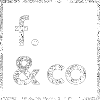Design thinking: a human-centric approach for the 21st century
Though Roger Martin has been advocating design thinking for several years, his 2009 book "The Design of Business" provides an anecdote that's worth retelling. While attending a dinner at which McKinsey Global Institute's senior advisor Martin Baily was giving the keynote, Rogert Martin was surprised to find out that, in the opinion of his fellow consultant, "scientific management would triumph over gut instinct and intuition". In this brave new world, McKinsey wrote, scientific-algorithmic concepts moving would move from an interesting skill to an "ante that gives companies the right to play the game".
Reviving ghosts from the past, the praised consultants at McKinsey were undoubtedly surfing on the secular myth of algorithmic management and pure rationality, or in other words, an obsession for what Martin calls "reliability". This reliability stems from the the excessive rationalization of work which has come to be known as "scientific management", or Taylorism.
The approach Martin promotes in the book does not abide solely by either intuitive nor rational principles, though he choses to deconstruct the latter. Reliability represents the most significant force undermining the true innovative capacity of today's organizations. "The most successful businesses in the years to come", he writes, "will balance analytical mastery and intuitive originality in a dynamic interplay that I call design thinking" (p. 6).
Behind design thinking is a new type of logic that sits not between but besides both classical approaches. Martin borrows from the American pragmatist Charles Sanders Peirce, who defined the notion of abductive logic. Standing next to inductive and deductive forms of reasoning we are most familiar with, abduction posits that "it is not possible to prove any new thought, concept, or idea in advance: all new ideas can be validated only through the unfolding of future events" (p. 25). As a matter of fact, no truly new idea can be drawn from induction or deduction. All novelty must be, at one point, a thing of the unknown.
From such 'hunches' Martin defines a path well-known by contemporary managers, who formalize intuition into heuristics, which in turn are made into algorithms and, more recently, written as code to be executed not only automatically, but without the need for human intervention. That is how, for instance, online pure players like Amazon or Netflix are able to generate massive revenue (and increasing margins) that rely on coded algorithms to recommend content that drive sales.
Martin also talks about McDonald's evolution throughout the 20th century, which is the story of the refinement of an idea to its paroxysm. No doubt, the company might be faced with the need to renew its value proposition shortly. For that, no optimization under constraints will suffice. Looking at the MCD stock value over the last years, we notice a constant growth in the public valuation of the company. Funding, it turns out, is key to the success of abductive reasoning. While few scholars have given much thought to the relationship between creativity and financing (save, perhaps for experts of crowdfunding), Martin proposes that design thinking, as an iterative an uncertain process, must be accounted for differently.
"The corporation cannot define the resources or time frame required to solve the mystery, which means that debt financing cannot be used as a source of funding for the exploration. Debt must be paid back on a predetermined schedule, and thus exploration, which has no schedule, requires equity financing" (p. 40).
Beyond the numerous applications of design thinking – of which Martin provides examples such as Procter & Gamble, and Herman-Miller – the book also targets the theoretical constructs that govern contemporary business strategy, which obsesses over the reliability of outcomes when customers are increasingly inclined to demand validity over reliability. Through decades of "scientific management" being taught in business schools, we have become formatted to search ever more deeply for causal relationships that suppose that the ceteris paribus (all things being equal) clause stands always. "But that is precisely the point of living in an open, uncontrolled system, also known as the world: all things are not equal from one experimental run to another" (p. 56).
Design thinking and abductive reasoning put the various declinations of human experience at the center of the exploration process of organizations. It serves to explore emerging business opportunities using a process that iterates much like a design team: "work iteratively, build a prototype, elicit feedback, refine it, rinse, repeat. The team uncovers problems and fixes them in real time, as the process unfolds" (p. 121) writes Martin. Design thinking recognizes, much like Durkheim did in 1888, that we need to recontextualize our value propositions, our production processes, and the economics that lie behind.
"the man that the economists talk about, this systematic egoist, is little but an artificial man of reason. The man that we know, the real man, is so much more complex: he belongs to a time and a country, he lives somewhere, he has a family, a country, a religious faith and political ideas" – (Durkheim [1888] 1970, p. 85)
The time has come to integrate abductive reasoning into the way we think about our work, our organizations, our colleagues. Though this may require a "reformatting" of one's mindset, the resources that pave the way are plenty, starting with Martin's book, which provides insights and perspectives on collaboration and design thinking as tools for the future. Much in the same way, this is what this blog hopes to achieve. In all these efforts, it seems, we return to the human-centric nature of our "companies", so that we may strive both in dollars and cents, and in making the world a bit better.


